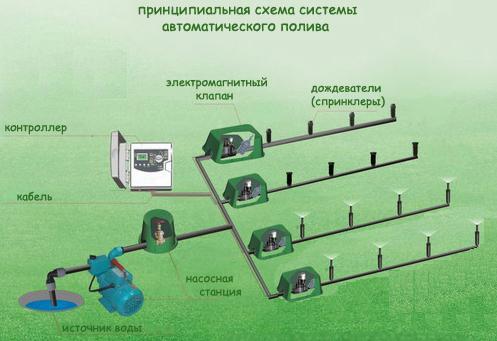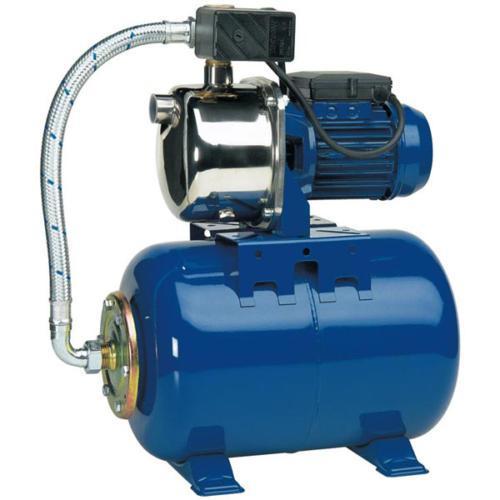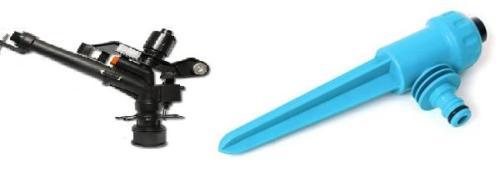Advise the scheme of automatic watering of the lawn
The question is really relevant. Today, many owners of summer cottages and private houses allocate large areas for lawns. It is both beautiful and convenient. Greenery gives a special liveliness to the site, and lawn care is minimal - you just need to feed and cut on time. But this is only if the automatic watering is properly organized. In general, it is rather difficult to advise the lawn automatic watering scheme - much depends on the lawn itself, its size, conditions, and also the owner's requirements. Sometimes it will be easiest to turn to specialists - they work real miracles - lighting, synchronous watering to a certain melody and much more. But it's not cheap. Therefore, we will try to tell you briefly about the rules for choosing an automatic irrigation scheme.
Standard watering scheme
You should start with a standard irrigation scheme - it can be supplemented with a moisture detector, a weather station, and other complex sensors. But this increases its cost and complexity of installation, so at first you can do without additional components.
So, the standard automatic watering scheme includes:
- Pumping station;
- Pipeline;
- Sprinklers.
If different types of sprinklers are used during assembly, pressure regulators should also be used - they will ensure reliable watering and longevity of the entire system.
In cases where one irrigation scheme provides moisture to a large area, and the pump power is not enough to irrigate the entire area, electromagnetic valves are used - thanks to them, the system alternately opens the sprinklers, evenly watering the entire lawn.
When supplying water with sand and other mechanical impurities, it is necessary to install a filter - it will protect the sprinklers from damage.

Now it's worth telling about the different components of the system in more detail.
Pumping station
When choosing a pumping station, first of all, you should choose a model whose capacity corresponds to the irrigated area. It is quite understandable that the more powerful model will cost more. But she will be able to quickly water the lawn of a really large area. If in doubt, it would be best to consult a specialist at the company where you are going to buy the pump. This will allow you to avoid mistakes and, accordingly, serious financial expenses.

Sprinklers
Sprinklers are also called sprayers. It is designed to distribute water evenly over a large area. It also excludes damage to the lawn by an overly powerful jet. On sale today you can see static and rotary models.

The former spray water over the entire radius at the same time. Rotary ones make a circle of 360 degrees in a few seconds, watering the area gradually. Static ones look more aesthetically pleasing and distribute water as evenly as possible, but they are not recommended for use on areas larger than 6-8 square meters. Rotary ones are great for larger areas.
Pipeline
For the pipeline, ordinary low pressure plastic pipes are suitable. The main thing here is to correctly calculate the cross section. However, this is not difficult to do - knowing the throughput of all sprinklers (this should be indicated in the characteristics), you can easily calculate how many liters of water per second the pipeline should pass.